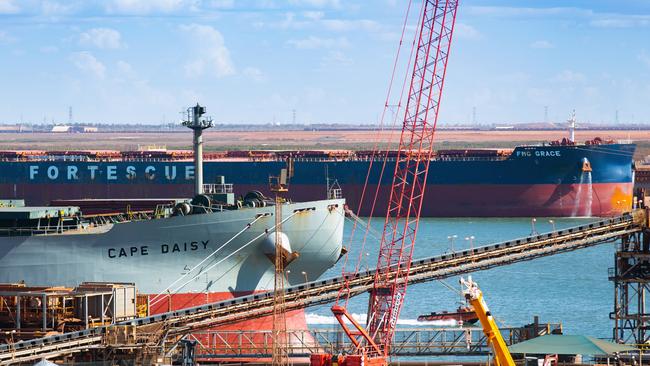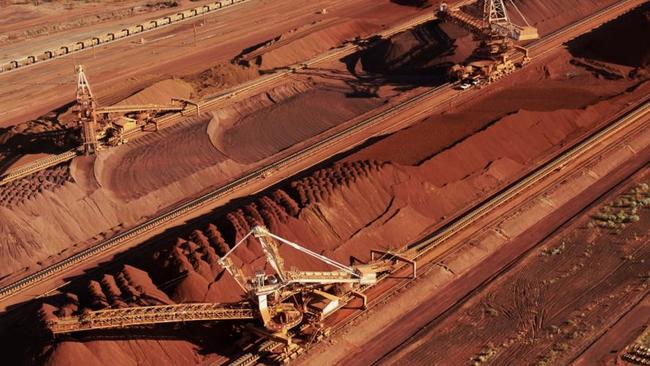Commodity prices plunge on recession, China fears
Prices are plunging amid growing fears China’s pandemic policies may crimp its growth and as inflation worries hit the global economy.

Iron ore looks set to continue this month’s sharp plunge on growing fears of a slowdown in China, amid a commodity price plunge that also battered gold producers on Wednesday.
Iron ore spot prices were trading just below $US110 on Tuesday, but Singapore futures dipped further in Wednesday trading, touching $US106.70 late in the day – their lowest mark in 2022.
The falls in Singapore were mirrored by a similar 2.7 per cent drop in the value of the most traded active contract on China’s Dalian exchange, with the iron ore price rout seemingly set to continue as mass testing for Covid-19 in Shanghai this week has again raised fears of wider lockdowns in China’s major cities.
Australia’s most valuable export commodity was worth more than $US145 a tonne a month ago, but has slumped on growing fears that China’s “zero Covid” policy will further crimp its economy amid reports iron ore stockpiles are rising as Chinese steel mills idle blast furnaces as lockdowns weaken economic activity and hit steel demand.
The growing threat posed by a weakening Chinese economy has exacerbating inflation concerns hitting major developed nations, with fears of a broader recession – partly triggered by high commodity prices – also triggering an oil price plunge.

West Texas Immediate crude oil prices had limped to levels just above $US100 a barrel late on Wednesday, Australian time, after plunging 8.6 per cent the previous day to dip into double figures for the first time since April.
The oil slump was triggered by recession fears on Wall Street, with a rally in the US dollar also hitting the gold price, which fell to a six month low beneath $US1800 an ounce this week.
Gold was holding those levels late on Wednesday on international markets, held back by the strong rise in the value of the greenback as investors preferred the US dollar as a haven asset.
But the combination meant the gold price traded relatively steady in Australian dollar terms through Wednesday, trading in a $2596 to $2606 range through the day - although it is well down on levels closer to $2660 on Tuesday.
The commodity price rout has also seen copper crash below $SU7500 on global markets on Wednesday, with early trading on the London Metals Exchange down 5 per cent to $US7291.50 a tonne, copper’s lowest level since 2020 and well below April levels above $US10,000. Steep falls were also running in the price of aluminium, zinc and tin.
The commodity price carnage took a heavy toll of Australian resources stocks, with the energy sector down 5.8 per cent for the days, with the materials sector down 5 per cent.
Of the major miners, Rio Tinto was hit the worst, closing down 7.4 per cent or $7.40 to $93.37. BHP was off $2.24m, or 5.6 per cent to a $37.76 close, with Fortescue Metals Group hitting its lowest closing mark in 2022 at $16.48, down 4.9 per cent for the day.
Oil stocks were also battered, with Woodside Energy Group down 6.9 per cent, or $2.24, to $30.20, and Santos down 6.1 per cent to $7.02.
Australia’s gold majors fared no better, with Newcrest Mining down 6.6 per cent to $19.60, Northern Star Resources down 30c to $6.91, and Evolution Mining down 3.9 per cent to $2.41.
Copper and base metals miner 29Metals was among the worst hit of Australia’s mid-tier producers, with its stock down 11.4 per cent or 18.5c to $1.435. OZ Minerals closed down 48c to $16.97, with Sandfire Resources falling 37c, or 8.4 per cent, to $4.06.




To join the conversation, please log in. Don't have an account? Register
Join the conversation, you are commenting as Logout